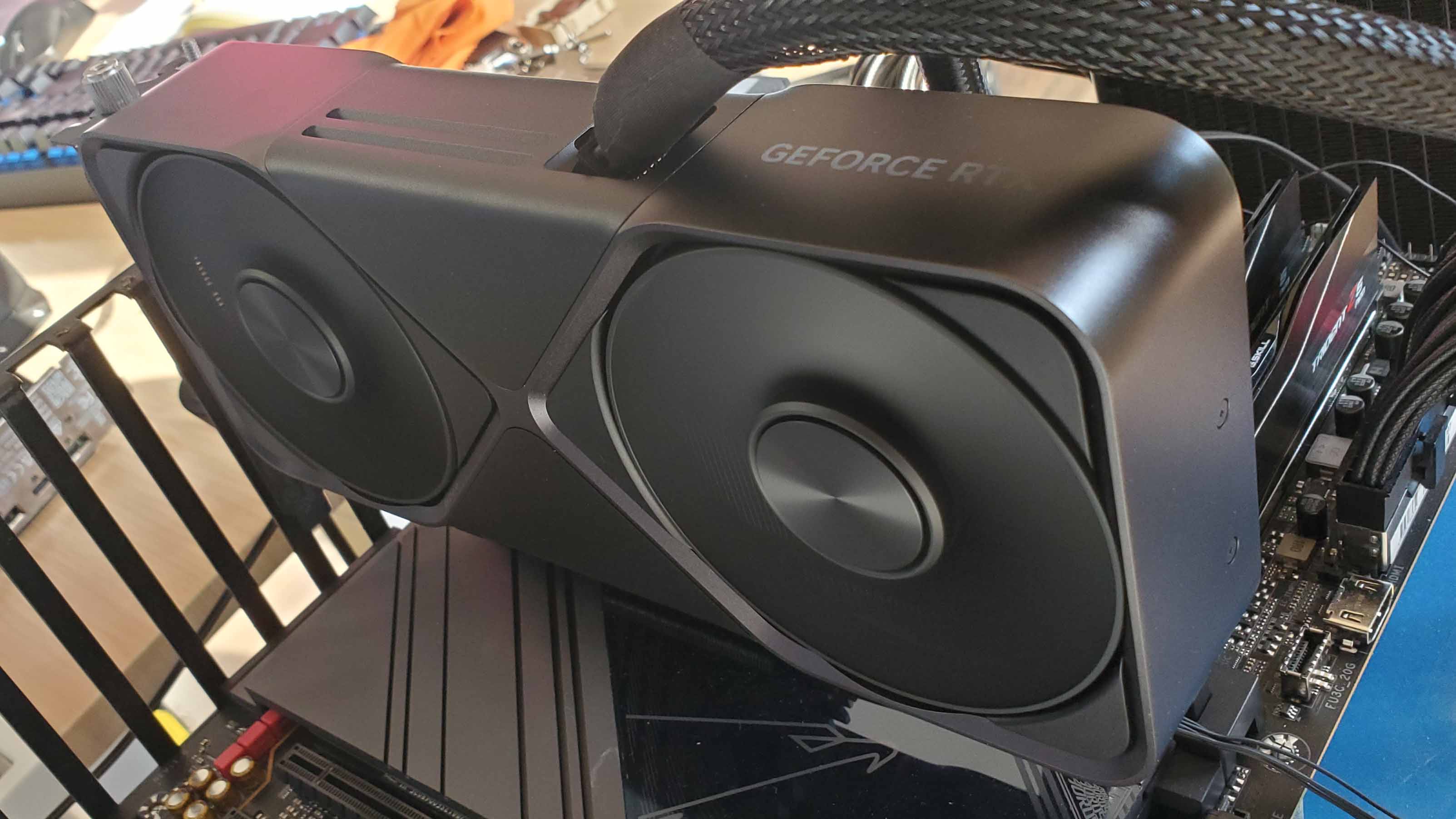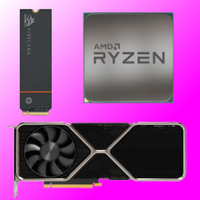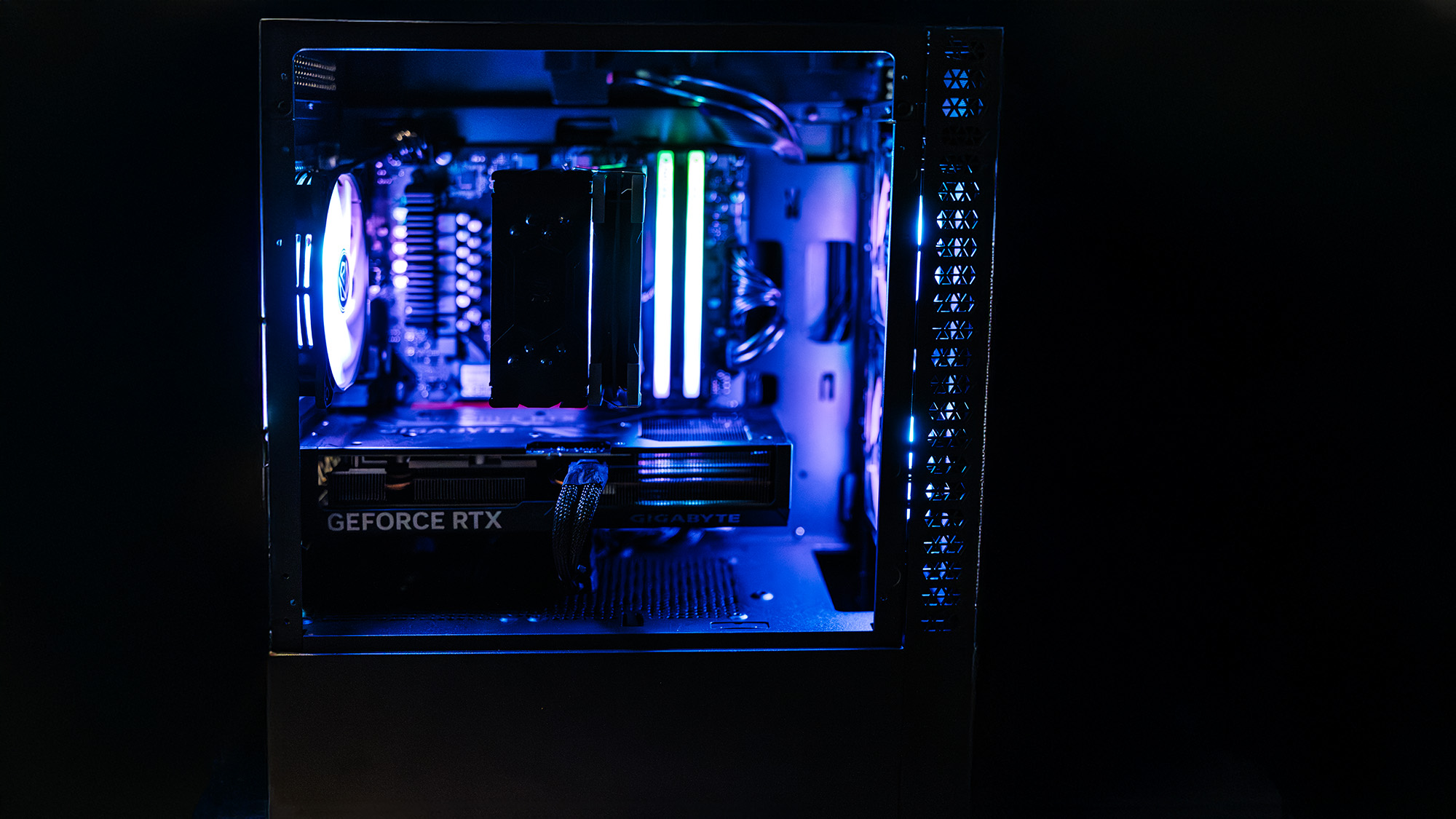More RTX 50-series supply on the way? Rumours suggest Nvidia may have started to use SK Hynix GDDR7 in potential boost to production
How this interacts with shifting tariffs, I have no idea.

I think it's fair to say that a defining feature of the RTX 50-series launch has been an overall lack of availability. Not a day goes by without me checking graphics card listings for new stock, only to be continually greeted with minimal available cards and some ludicrous prices as a result. However, according to known X leaker @Zed__Wang, Nvidia has begun using GDDR7 from SK Hynix for RTX 50-series cards, starting with the RTX 5070.
Nvidia recently started to use SK Hynix GDDR7 for the RTX50 Graphic Card. Started with RTX5070 first.April 8, 2025
Benchlife reports that SK Hynix memory modules began shipping to AIB partners for production at the end of March. Nvidia currently uses Samsung GDDR7 modules in the new cards, so it's unclear if this switch would mean using both suppliers at once for consumer GPUs, or moving over wholesale to SK Hynix memory for the foreseeable future.
Should these reports turn out to be correct, however, that would mean that new graphics card stock (of the RTX 5070, at least) may be on its way at some point in the very near future.
Ifs, buts, and maybes. Still, Nvidia already has agreements with both memory suppliers in place across its portfolio, including Samsung's eight-layer HBM3E memory used for low-tier AI processors sold to the Chinese market and SK Hynix 12-layer HBM3E in its all-singing, all-dancing Blackwell AI products.
If a hold up in Nvidia's consumer GPU supply chain was down to Samsung memory production, then clearing that bottleneck with an SK Hynix solution would be a help to supply.
Samsung has previously admitted struggling to meet Nvidia's standards in the memory production arena, although this was more about meeting requirements for chip performance rather than satisfying overall supply. Still, one may affect the other, of course, but this was in relation to HBM3E and not GDDR7 used in gaming cards.
And then there are tariffs to throw into the equation. Given that the Trump administration seems to change its mind on US tariffs on a daily basis at the moment, it's reasonable to think that a supplier switch might help Nvidia navigate some troubled waters, although both manufacturers primarily operate out of South Korea for GDDR7 production.
The biggest gaming news, reviews and hardware deals
Keep up to date with the most important stories and the best deals, as picked by the PC Gamer team.
Supply chains are complicated things, though, and the great tariff wheel-of-fortune we all appear to be spinning on is more complex still.
Tech manufacturers the world over look to be considering their options at the moment, and the question of who makes what and ships it from where is an ever-present one when producing any product in these troubled times.
Anyway, more GPU supply sounds like a good thing to me. At the very least, an influx of RTX 50-series cards might get the market moving back in the right direction, by which I mean, gamers being able to purchase a new GPU for a reasonable amount of money. Wouldn't that be nice?
Best CPU for gaming: Top chips from Intel and AMD.
Best gaming motherboard: The right boards.
Best graphics card: Your perfect pixel-pusher awaits.
Best SSD for gaming: Get into the game first.

Andy built his first gaming PC at the tender age of 12, when IDE cables were a thing and high resolution wasn't—and he hasn't stopped since. Now working as a hardware writer for PC Gamer, Andy's been jumping around the world attending product launches and trade shows, all the while reviewing every bit of PC hardware he can get his hands on. You name it, if it's interesting hardware he'll write words about it, with opinions and everything.
You must confirm your public display name before commenting
Please logout and then login again, you will then be prompted to enter your display name.


